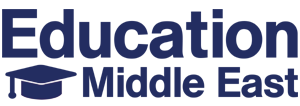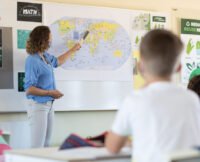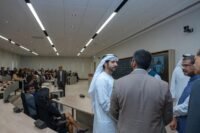Campbell Douglas, Principal/CEO at GEMS Wellington Academy – Al Khail, discusses the science of learning and what teachers should know about how the brain learns best
Educators across the globe are driven by the desire to empower their students — enabling them to aspire, create and excel, so they can help build the world that will be. To ensure students are best prepared for this indefinable future, leaders in the education industry must provide them with the best teaching and learning possible. I believe this can best be done through a cognitive science approach.
The science of learning
The ‘Science of Learning’ is an evidence-based body of knowledge that aids in the understanding of how our brains learn and work best. This approach is informed by the latest developments in neuroscience – the scientific study of the architecture of the human brain combined with the study of cognitive psychology.
Scientists and educationalists are coming together to carry out research that is changing the way key decision makers in the sphere of education plan for the most effective learning. While some studies are unique to early child stages, known as the critical brain development period, many lessons learned from neuroscience can be applied to learning at all ages, across all curricula and subjects. These theories can support educators in making informed decisions on how to enable children and adults to best learn.
Psychologists and educators have conducted research on how the brain learns for hundreds of years. However, as modern technology, such as brain imaging, has advanced over time, neuroscience has gathered pace and is now providing educators with a better understanding of how the brain thinks, acts and learns.
Incorporating cognitive science into teacher training
Until recently, teacher training programmes did not include lessons from neuroscience nor a basic scientific knowledge of how the brain learns. However, current changes to the ongoing training of Early Career Teachers in England now rightly requires new teachers, and those training and supporting them, to invest time in studying the science behind learning, including a knowledge of newly founded theories such as ‘Information Processing’ and ‘Cognitive Load’. While this is a positive step for the education sector and newly qualified teachers, it risks leaving behind previously qualified teachers, who may remain unaware about the benefits and important new body of knowledge.
Educators are gradually recognising the pressing need to understand how the brain best learns to effectively plan for optimum learning in their classrooms.
Teaching approaches based around retrieval practice, spacing, understanding cognitive load, scaffolding, dual coding, interleaving and guided practice are all part of a student’s daily learning. By paying attention to how the brain filters, encodes and consolidates information, teachers can help their students learn more efficiently and effectively.
The result is transformed educational practices that allow educators to create the best possible learning experiences for students across the globe, from foundation stages through to secondary school.
The importance of parental support
It is also important for teachers and educators to understand how parents too can play an important part in this process. By understanding the Science of Learning, they can also support their children at home. Creating routines, limiting distractions and using a calendar to assist with schoolwork are simple ways parents can help their children learn most effectively. Cutting down time spent on social media and technology distractions in general, can make it easier for children to learn and retain information, reducing the time it takes to complete homework and enabling more proficient learning — because the brain cannot do two complex tasks at the same time.
The importance of memory in the learning process is also a key aspect of the Science of Learning. Where parents can really help is by understanding retrieval practice, as opposed to reviewing*, and ensuring that their children are engaged in this. The act of going from review to retrieval improves learning exponentially. By incorporating activities such as mini quizzes, flashcards, graphic organisers, spaced practice, and brain drains into homework routines, parents can increase the effectiveness of their child’s learning.
Parents can also focus on the conversations they have with their children to aid the learning process. When asking questions around schoolwork for example, focusing on the ‘why’ encourages critical thinking. When it comes to praise, this should focus on the effort and work put into achieving something, rather than the achievement itself. This helps children build a growth mind-set around their abilities and mistakes made. Ultimately, they form an understanding that it’s okay to make mistakes because it is part of the learning process.
A constant learning evolution
Embedding this research-driven best practice across schools is more important than ever before. It should be done when onboarding teachers and leaders as well as in regular lesson observations, including peer observations (teachers observing other teachers). Educators must direct their efforts toward developing a consistent and coherent ideology about the way all children (and adults) learn, based on scientific research, which will yield improved student outcomes as a result. It is vitally important that all teachers and individuals working in education focus on recent findings from neuroscience so that students can continue to learn as effectively and efficiently as possible.
Nevertheless, educators acknowledge that teaching goes beyond solely science; there is a lot more ‘art’ involved, and the holistic development of students is just as important as academic development. It is also fair to say that outstanding teaching can, and does, happen without necessarily knowing how the brain works.
However, the increase in, and emphasis on, evidence-based approaches to teaching and learning, as well as a growing understanding of the science of learning, means the ever-evolving education industry now has a better understanding of the ‘best bets’ of evidence-based education. These are the strategies which, when implemented, have a better chance of helping students learn. Understanding how the brain learns means that teachers can focus on those ‘best bets’ to help enhance student memory, attention, and motivation. Most importantly, they can help students understand their own strengths and weaknesses as learners so that they are prepared in the best way possible for future learning and employment.








